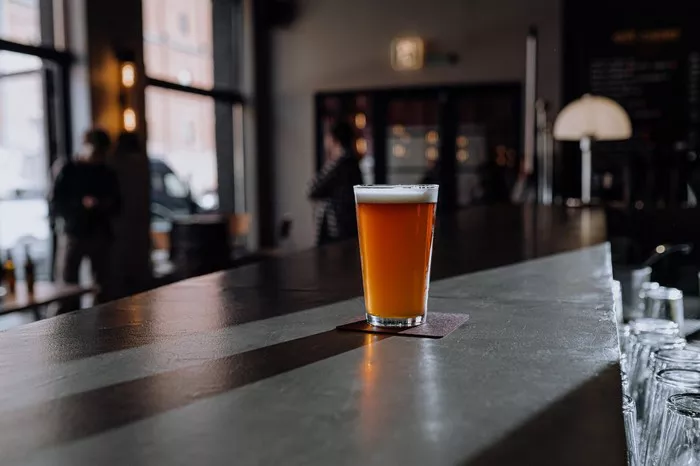In a world where health consciousness is on the rise and people are increasingly mindful of their alcohol intake, the demand for non-alcoholic beverages has surged. Among these, zero alcohol or 0 beer has gained significant popularity, offering a refreshing alternative to traditional brews without the intoxicating effects. But have you ever wondered how exactly 0 beer is made? Let’s delve into the intricate process that brings forth this satisfying and alcohol-free beverage.
The Genesis: Understanding the Concept of 0 Beer
Before delving into the production process, it’s crucial to comprehend what exactly 0 beer entails. Contrary to popular belief, 0 beer isn’t simply regular beer with the alcohol removed. Instead, it undergoes a distinct brewing process tailored to eliminate alcohol while retaining the flavor, aroma, and mouthfeel characteristic of traditional beer. This delicate balance between removing alcohol and preserving beer’s essence forms the cornerstone of 0 beer production.
Ingredients: The Foundation of Flavor
Like traditional beer, the journey of crafting 0 beer begins with meticulously selecting high-quality ingredients. These typically include malted barley, hops, yeast, and water. Each component contributes to the beer’s flavor profile and overall quality. However, in the case of 0 beer, special attention is paid to the selection of ingredients that minimize the production of alcohol during fermentation.
Mashing: Breaking Down the Barley
The first step in the brewing process is mashing, where the malted barley is steeped in hot water to activate enzymes that break down starches into fermentable sugars. This results in a sweet, malty liquid known as wort. In 0 beer production, mashing is carried out in a manner that maximizes sugar extraction while minimizing the formation of complex sugars that could lead to excessive alcohol production during fermentation.
Boiling and Hopping: Adding Flavor and Aroma
Once the wort is extracted, it undergoes boiling, during which hops are added to impart bitterness, flavor, and aroma to the brew. Hops also act as a natural preservative, extending the shelf life of the finished product. In the case of 0 beer, brewers may adjust the hopping process to achieve the desired flavor profile without contributing to alcohol content.
Fermentation: Transforming Wort into Beer
Fermentation is the pivotal stage where wort transforms into beer. Yeast is introduced to the wort, triggering the conversion of sugars into alcohol and carbon dioxide. In traditional beer brewing, this process continues until the desired alcohol content is achieved. However, in 0 beer production, measures are taken to halt fermentation before significant alcohol accumulation occurs, typically by controlling temperature or using specialized yeast strains that produce minimal alcohol.
De-Alcoholization: Removing Alcohol Without Compromising Flavor
The defining step in 0 beer production is the removal of alcohol from the fermented liquid. There are several methods employed to achieve this, each with its own advantages and limitations. One common approach is vacuum distillation, where the beer is subjected to reduced pressure to lower the boiling point of alcohol, allowing it to be separated from the rest of the liquid. Another method involves reverse osmosis, where the beer is passed through a semi-permeable membrane that selectively removes alcohol molecules while retaining flavor compounds.
Carbonation: Adding Bubbles for Refreshment
Once the alcohol is removed, the 0 beer undergoes carbonation to achieve the desired level of fizziness. This is typically done by injecting carbon dioxide into the liquid under pressure, a process known as force carbonation. Alternatively, natural carbonation can be achieved by allowing the beer to ferment slightly before packaging, producing carbon dioxide as a byproduct.
Packaging and Quality Control: Ensuring Consistency and Freshness
Before being released to consumers, 0 beer undergoes stringent quality control measures to ensure consistency and freshness. This includes testing for alcohol content, flavor profile, color, clarity, and microbial stability. Once approved, the beer is packaged in bottles, cans, or kegs, ready to be enjoyed by health-conscious individuals seeking a satisfying alternative to traditional brews.
The Evolution of 0 Beer: Innovations and Trends
As consumer preferences continue to evolve, so too does the landscape of 0 beer production. Brewers are constantly experimenting with new ingredients, techniques, and flavors to cater to a diverse audience. From fruit-infused varieties to artisanal small-batch brews, the world of 0 beer offers something for everyone. Additionally, advancements in brewing technology have made it possible to produce 0 beer that rivals its alcoholic counterparts in taste and quality, further fueling its popularity among discerning consumers.
Conclusion: Crafting the Perfect Zero Alcohol Brew
The process of making 0 beer is a meticulous blend of science, art, and innovation. From selecting premium ingredients to employing specialized brewing techniques, every step is carefully orchestrated to deliver a satisfying and alcohol-free beverage that doesn’t compromise on flavor or quality. As the demand for non-alcoholic options continues to soar, 0 beer stands poised to quench the thirst of health-conscious individuals seeking a refreshing alternative to traditional brews. So, the next time you crack open a cold one, consider the intricate journey that brought it from grain to glass, and savor the craftsmanship behind every sip.


